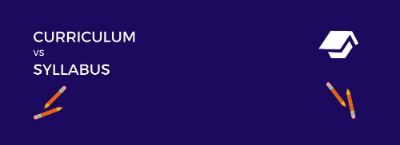Many people can be stuck when they want to apply to some position, understanding they do not know what kind of documents to send. Especially at the beginning of your career, you may feel confused about what type of application document is better accepted by HR professionals, the ideal format, design, and tips to make a good impression.
This article is purposed to help you feel more informed and confident when applying, and is going to present to you:
- Differences between CV and Resume in different countries
- How to write a successful CV or Resume (tips/ templates)
In your country and practice, CV and Resume may be used as interchangeable terms, indicating the same document. However, depending on the country you are applying to, the HR people may assume different forms under CV and Resume.
Read the following section for more insight into this difference among countries.
Difference Between CV and Resume in the US and Canada
In short, the US and Canada are perhaps the only locations where there are significant differences between CV and Resume.
Here, a Resume is a short, usually 1-2 page document summarizing the candidate's main qualifications for the particular position. CV is longer and can occupy up to 8 pages, as it is assumed to present the detailed path of one's education and career.
If you write a Resume, you should include the first importance of your experience and skip too detailed explanations. The HR person should understand your relevance to the position with a quick scan of the document.
In the case of a CV, you should go beyond the Resume sections and include a detailed description of your work history, including academic publications, certifications, grants, fellowships, etc.
For better insight, read the mandatory sections for both the Resume and CV below.
Resume or Résumé usually contains:
1. Full name
2. Your current position or the position you're applying for
3. Contact information
4. Resume summary or objective
5. Work experience
6. Education
7. Skills
8. Languages
9. Certifications and interests (optional)
CV or Curriculum Vitae (translated from Latin as Course of Life) usually includes:
1. Full name
2. Contact information
3. Resume summary or Resume objective
4. Research interests
5. Education
6. Publications of books and papers
7. Teaching experience
8. Work experience
9. Conferences and courses
10. Skills
11. Certificates
12. Languages
13. Grants of fellowships
14. References
See an Academic CV example here.
As a shorter and more targeted type of self-describing document, a Resume is usually used when applying to jobs. CV is a choice when applying to academic positions, such as grants, research fellowships, etc.; as for this sphere, the person's detailed experience is vital.
Coming from the explanation of both documents, the Resume is almost always modified and personalized for each position. You may want to highlight or exclude some fragments of your work history for certain jobs. On the contrary, CV is usually constant, with the only change being the addition of new career achievements.
Later in the article, you will read the tools and tips for constructing your Resume and CV.
Difference Between CV and Resume in European countries
In all the countries of Europe and New Zealand, both CV and Resume are similar to US Resume. You should send the same document in your application, regardless if the job announcement requires a CV or Resume. In those countries, the two terms are synonyms.
If a recruiter requires an American CV, they may mention an Academic CV in the job announcement, signaling you should construct a longer and more detailed document about your experience.
How to Write a Successful CV and Resume
In both cases, be it a long Academic CV or a condensed Resume, you should put a good effort in creating it. First of all, a well-designed CV tells about your serious intentions for the position you are applying to. It's the first step of your self-introduction to the new company, and it matters how you perform at this stage.
Secondly, a well-chosen template along with the correspondence to the accepted standards signals your familiarity with up to date tools and tech-savviness.
The three important things for both documents are: use a template, follow the standards, and proofread. More detailed tips on creating a successful CV is described in our “How to Write a CV [full guide]”.
You should carefully check your CV for typos and the validity of the information. Also, make sure you use modern wordings to present your experience. Search for the skills, professions, titles to sound professional and precise.
When it comes to your CV structure, there are options for chronological, functional, and mixed CVs. The templates in the upcoming section make it significantly easier to construct a Resume. However, it's still up to you to order sections and their sequence.
A chronological CV assumes you should write your recent experience first. Accordingly, you should write about your working experience before education. This type of CV is used if you have constant progress throughout the years, which is likely to be highlighted. You can also use the chronological CV if your work experience is rich enough to outweigh your education.
If you are freshly graduated with little or no working experience, it's better to write a functional CV. This type of CV is rarely used, as the chronological one is wider preferred among recruiters. However, in some cases, applying with a functional CV can be more beneficial to you.
Particularly, a functional CV lists your skills first and put more emphasis on them. After that, there may come some working experience as a background or proof for the skill. For example, you may include Leadership or Organization as the main section and write about your experience of managing a group of 20 people towards a specific project goal.
As you might guess, a functional CV is good if you obtained skills you believe are enough to occupy a position, but you do not have enough experience yet. Also, with this type of CV, you can hide gaps in your working history.
If you would like to introduce both your skills and working experience, here comes the combined type of CV. Here, the skills are listed first, and a full working experience comes next. However, even with the combined CV's universal approach, a chronological CV is the most widely accepted and should be used by default unless another type of CV is specified.
Templates
Not everyone has the skills to design and format documents, even the simple word file. Yet, your CV sections should have a properly organized layout.
For this purpose, there are plenty of both free and paid ready templates on the web, where you need to fill in the information. After inputting your information, the tool organizes your document in one click, allowing you to customize the order of sections, design, colors, etc.
It's both convenient and extremely time-saving to use templates. Also, they give you a hint on how to list your experience and what kind of data to include with automatic sections.
Use the below listed free templates as a start:
While generally, they all provide the standard layout with minor differences in design and color, you still can feel uncomfortable with how your CV looks in some of them. So, you may take a look at the CV templates of each tool before spending your time inputting your data.
If that's not an Academic CV, it's highly recommended to keep all the information on one page, in which the templates come in handy. The majority of them are already designed to be one page or offer customization options to become one page.
You may also use the same tool to create both long & detailed or short and condensed CVs. The majority of the tools can add or remove the sections if you want to emphasize or exclude certain data.
Summary
1. If you apply for European countries, both for CV and Resume, send the same document: short, usually 1-page-long self-describing document.
2. If you are required to send a Resume in the US or the Canadian job market, apply with the same document described in the first point.
3. If you apply to academic or research positions in the US or Canada, send a long and detailed document about your working experience.
4. Use templates to make sure there are a proper layout and structuring.
5. Use Chronological CV unless another type of CV is specifically required.
Published on Jan 15, 2021









